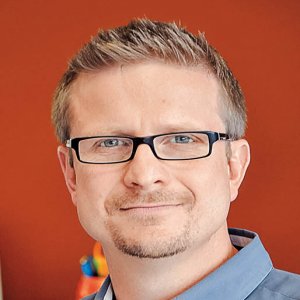
Optimal Load Factor from Automotive Railcar Fleet
Mexico has been reaping the benefits of its natural geographical position for some time, and arguably a significant portion of investment has been captured by this strength alone. After all, a major determining factor in deciding where to set up shop is a country’s capacity to deliver on the logistical side. By looking at the raw numbers, one would assume that Mexico, with around 300 Tier 1 global suppliers for the automotive industry, has little to worry about regarding the supply chain. Ensuring logistics within Mexico are top notch has had a direct impact on OEMs both domestically and internationally. As automotive OEMs announce plans to increase their production capacity, Mexico’s logistics providers are doing everything in their power to upgrade the country’s transport links to handle the industry’s extra capacity. Such is the case of Ferromex, Mexico’s key railroad operator, which manages over 8,500km of track nationwide. The company expects OEMs to set up shop in regions with easy access to the railroad given that Mexico’s automotive industry is often concentrated in urban clusters. Ferromex earmarked US$450 million for capital expenditures (CAPEX) in 2013, much of it going directly to providing better logistics for the automotive industry. Alberto Sánchez Varela, Ferromex Automotriz’s Assistant Vice President, says that US$57 million of this budget went to the company’s automotive network capacity, with the fleet growing by 55% to include 700 triple-level wagons (a 117% increase), 350 double-level wagons (a 26% increase), and 40 automax wagons (a 56% increase). “This investment is specifically targeted at the impact the automotive plants will have on our network. These funds will be allocated to covering that growth segment, aside from the natural expansion our business is undergoing,” says Sanchez.
Ferromex has worked as much as possible to find optimal logistical solutions for each new OEM plant before it is officially announced. The first step in developing the right solutions is to analyze each site, its transportation needs for inbound goods, and how to best answer those needs. Once complete, the distribution market will shift for each vehicle, and an estimate of volume is needed to understand how best to deliver tailor-made logistics solutions for each OEM, each plant, and each type of vehicle. This is where intermodal transportation solutions are helping to improve the efficiency and competitiveness of the automotive supply chain. Given the export-dominated nature of Mexican automotive production, the key for transport providers is how swiftly they can get the cars to ports or across the border to US and Canadian markets. Fortunately enough, Ferromex’s services in Mexico are provided under the same rules that the US and Canada expect. “This has allowed the process of taking a vehicle from a Mexican plant to an American or Canadian sales point much more transparent,” says Sánchez Varela. “We have managed to implement the same standards across North America, on the biggest railway network in the world, which gives us many advantages from a logistical standpoint. This makes the shipment of taking cars across the border much more efficient since the US and Canadian governments feel comfortable that any shipment coming from us can be treated like they would treat their domestic ones. That helps us at border crossings and has given us the upper hand against other modes of transportation.” One of the responsibilities of Ferromex Automotriz is how to combine the company’s rail positioning and automotive solutions to best service the customer. The main driver is for Ferromex to be able to transport the cars to their final destination in the shortest possible distance. As such, Ferromex has a range of options to chose from. To the east, one corridor runs up the US’ Eastern seaboard and Canada, while another goes up the Western corridor. “We also have the biggest fleet of automotive railcars that are used to transport these vehicles. We have a huge and competitive load factor which eventually translates into savings for our customers as well as having a fleet large enough to handle all their needs,” emphasizes Sánchez Varela
Logistics costs are one of the three most important areas that automakers analyze when considering where to build a plant, along with labor costs, and government incentives. As such, Ferromex has always sought to understand its place in the supply market, allowing it to grow from transporting 500,000 vehicles a year to 1.5 million in 2013. The firm’s business model looks at every export means for vehicles, not only cross-border trade. Ferromex controls a vital point for exporting vehicles in the port of Veracruz. However, it is also looking to diversify its access to sea lanes via the ports of Manzanillo and Lazaro Cardenas, among other possibilities. The company is talking to customers about business needs for the Pacific and is actively considering how best to integrate that avenue into its logistics efforts. On the other hand, KCSM, Ferromex’s closest rival, has been reporting double digit growth in car loads transported for the last few years. It enjoys similar alliances with US railroad companies such as Union Pacific. In addition, the company has been present in the Lazaro Cardenas port through its rail corridor for around 15 years. One way in which Ferromex is seeking to stave off its competition is through the way it invests its CAPEX, according to Sánchez Varela, as seen in the hefty proportion of its 2013 investment that was given over to the automotive division. “Most class 1 railroads invest about 20% of their CAPEX but Ferromex will be averaging a 30% level of investment for the next few years. This is a huge investment but we have a solid revenue stream and are gaining more business. We look very carefully at how to improve our capacity and our investment is integrated so that spending on one area of the business does not adversely affect another area,” explains Sánchez.















